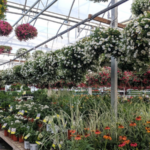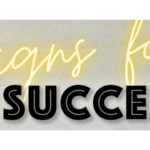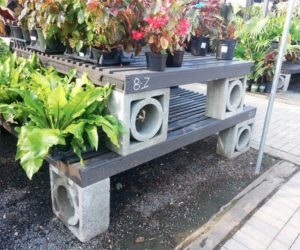From Beans to Beats
What is a company supposed to do once it has become a household name synonymous with its main product? Expand even further. At least, that is the answer for Starbucks Coffee Co., the coffeehouse powerhouse found in all 50 states and 38 countries outside the United States.
A single store selling coffee in Seattle grew into an empire with annual sales of $7.8 billion in 2006 and now sells much more than just coffee. The stores carry coffee-related merchandise, fresh food, bottled drinks and even movies, books and music.
One of Starbucks’ most recent ventures is its Hear Music record label. “Music has always been a part of the coffeehouse culture and is an essential part of the Starbucks heritage and in-store experience,” says Bridget Baker, a spokesperson for Starbucks.
“Extending Starbucks’ reach into music is a natural and logical move given our history and customer base.”
Yet introducing product lines outside of a company’s core products is a tricky move for any company, even Starbucks.
Expanding Outside the Core
Some Starbucks watchers have criticized the company for growing too quickly and at the expense of its brand. A roughly 800-word memo that company chairman Howard Schultz sent to Starbucks executives Feb. 14, 2007, addresses that topic, expressing Schultz’s feelings that the company has moved too far from its roasted roots.
“Over the past 10 years, in order to achieve the growth, development and scale necessary to go from less than 1,000 stores to 13,000 stores and beyond, we have had to make a series of decisions that, in retrospect, have led to the watering down of the Starbucks experience and what some might call the commoditization of our brand,” the memo reads.
The shift in Starbucks’ emphasis has also been noted outside the company. “Starbucks has expanded beyond its original concept of selling espresso drinks in an enticing atmosphere in the past several years,” said an article in the Wall Street Journal. The company now wants to position itself as an arbiter of culture with ventures like the Hear Music label, which signed an exclusive agreement with former Beatle Paul McCartney and released his album this summer.
Not every new undertaking works out, though. In the 1990s, the company experimented with several new ideas, including a full-service, sit-down restaurant called Cafe Starbucks and a computer-friendly bar called Circadia, according to the Associated Press. Starbucks also tried to push further into merchandise and media, the AP says, with a periodical called Joe Magazine and a line of journals and desk supplies. None of the ventures lasted, and some think Starbucks’ recent media ventures, like Hear Music, similarly distract from its core product, premium coffees.
Sharpening the Focus
After the public release of his memo, Schultz told the Wall Street Journal Starbucks would continue to expand beyond coffee while still focusing on its main offering.
To sharpen its focus on coffee, Starbucks is testing having its baristas scoop loose coffee beans and grind them in some stores. The company also wants to make more coffee-related merchandise and appliances available at its stores.
Starbucks hopes this will keep customers who encompass all ethnicities, ages and income levels, according to Baker coming into its many stores. Schultz has said he would like to eventually have 40,000 Starbucks locations worldwide, more than tripling the 12,440 Starbucks locations operating worldwide at the end of fiscal year 2006.
Going forward, the company has stated it is going to be very thoughtful and careful about future brand extensions. “It’s a slippery slope to sunglasses and underwear,” one executive joked to the AP.
The bottom line: expansion can bring about great opportunities for a company, even your garden center. Just make sure every expansion has been carefully thought-out, and remain true to your green-goods core.
SIDEBAR
Think You Know Starbucks?
Founded: 1971 in Pike Place Market, Seattle
Stores: 12,440 at 2006 fiscal year end
Locations: Stores can be found in North America, Europe, the Middle East, Latin America and the Pacific Rim.
Annual sales: $7.8 billion in 2006
Customers: nearly 44 million customer visits per week
Employees: more than 145,000
Brand portfolio: Starbucks Entertainment, Starbucks Hear Music, Tazo, Ethos Water, Seattle’s Best Coffee and Torrefazione Italia Coffee.
Trivia: Starbucks is named after the first mate in Herman Melville’s Moby Dick.
Embracing Social Responsibility
Starbucks is committed to selling customers top-notch products while remaining socially responsible. “The Starbucks experience is unique and provides much more than a premium cup of coffee to our customers. We are committed to conducting our business in a respectful, ethical and responsible manner in the regions and countries where we operate,” Baker says.
To help the farmers with which the company does business, Starbucks developed an integrated approach to coffee purchasing based on six principles:
- Paying premium prices to help farmers make profits and support their families.
- Encouraging participation in Coffee and Farmer Equity (CAFE) practices, which are social and environmental guidelines for coffee purchasing.
- Purchasing conservation (shade-grown) and certified coffees, including organic and Fair Trade Certified.
- Providing funds for farmers to access affordable credit so that they can invest in their farms and receive assistance to help them through cash shortages during crop cycles.
- Investing in social-development projects in coffee-producing countries.
- Collaborating with coffee producers globally on coffee quality, production, processing and research through the company’s team of experts at the Starbucks Farmer Support Center in Costa Rica.


















 Videos
Videos





